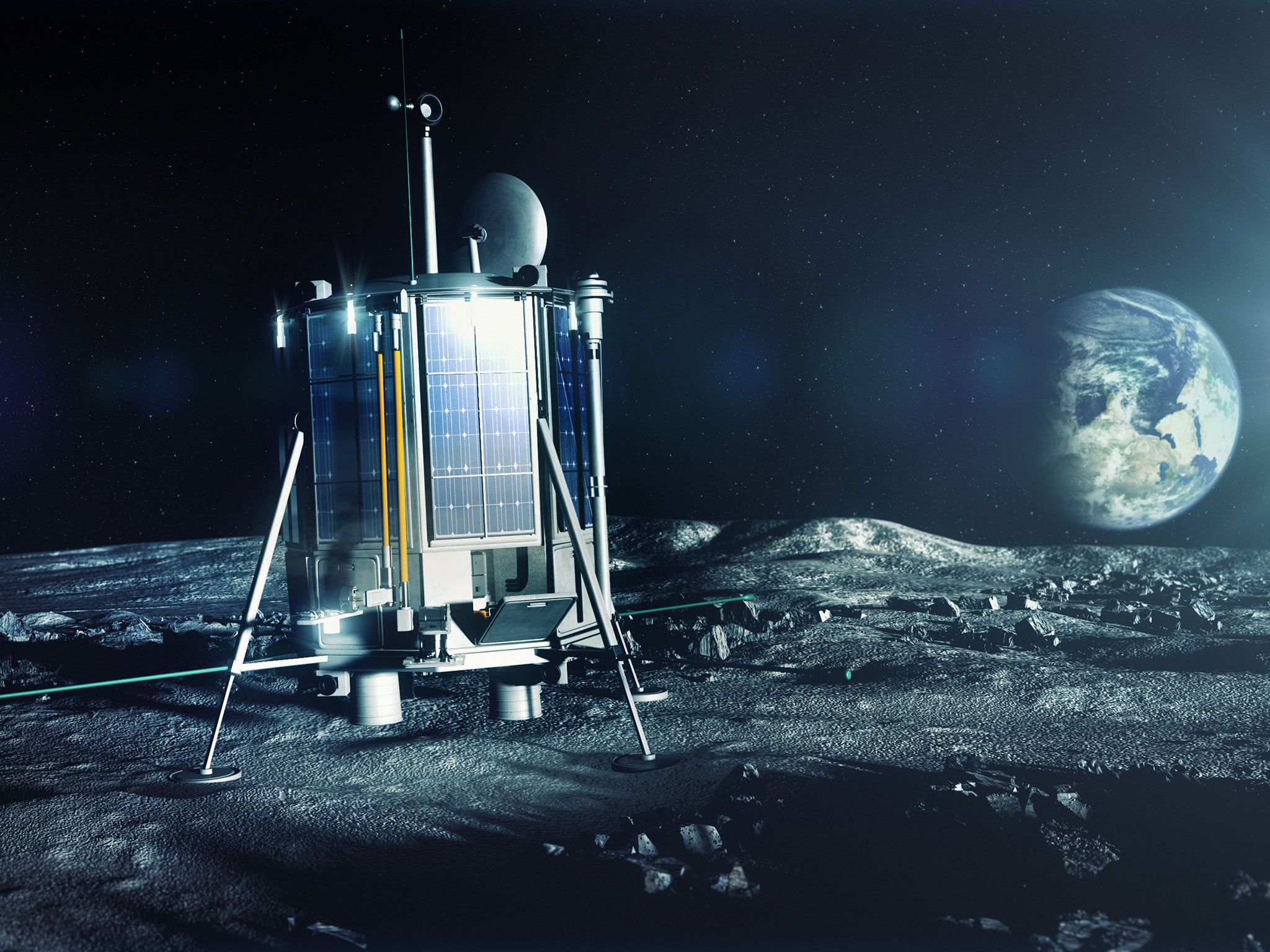Lunar Mission One: A chance to bury your DNA on the dark side of the Moon
The mission’s craft will be capable of drilling 100m below the lunar surface

Your support helps us to tell the story
From reproductive rights to climate change to Big Tech, The Independent is on the ground when the story is developing. Whether it's investigating the financials of Elon Musk's pro-Trump PAC or producing our latest documentary, 'The A Word', which shines a light on the American women fighting for reproductive rights, we know how important it is to parse out the facts from the messaging.
At such a critical moment in US history, we need reporters on the ground. Your donation allows us to keep sending journalists to speak to both sides of the story.
The Independent is trusted by Americans across the entire political spectrum. And unlike many other quality news outlets, we choose not to lock Americans out of our reporting and analysis with paywalls. We believe quality journalism should be available to everyone, paid for by those who can afford it.
Your support makes all the difference.A proposed mission to the Moon led by British scientists – largely funded by donations from the public – could pave the way for the construction of a lunar observatory, organisers have claimed.
The coalition of scientists behind Lunar Mission One set out their detailed goals for the project, which was announced last month.
If successful, it will involve the first exploration of the Moon’s south pole, the site of the deepest impact crater in the solar system.
An unmanned landing craft capable of drilling 100 metres below the surface of the Moon would not only be able to study its geology, but could also assess the feasibility of creating a human base in an area which has so far proved inaccessible, the scientists said.
Such a development would excite astronomers because a powerful telescope on the lunar south pole would be naturally shielded from interference from Earth and could detect signals from some of the earliest galaxies.
Writing on the mission’s website, the scientists said that drilling deep into the Moon’s surface would enable them to “access and analyse lunar rock that is 4.5 billion years old”.
They added: “By studying this ancient lunar rock we hope to shine some light on the following: What are the origins of the Moon? How did the late heavy bombardment of the inner solar system shape the history of our planet? Might the Moon be suitable for a permanently manned base for space exploration?”
It is hoped that the probe will be launched in 2024 at a cost of £500m. Its backers are aiming to raise the majority of that sum through donations from the public, who will be given the chance to have photos, text or even their DNA – in the form of a strand of hair – buried in a time capsule underneath the Moon’s surface when the mission ends.
When the mission was first announced, the scientists’ aim was to raise £600,000 through the crowd-funding service Kickstarter in four weeks. Today, with nine days to go, the total had exceeded £462,000.
Ian Crawford, Professor of planetary science and astrobiology at Birkbeck College, University of London, and one of the project’s main scientific advisers, said the mission was “quite similar” to one recently scrapped by the European Space Agency. “In addition, we propose to have a drill so there will be new science too,” he told the BBC.
The craft which will be sent on the mission has yet to be designed or built, but the scientists said it would certainly feature a sizeable drill, a robotic arm to handle the excavated material and an advanced navigation system enabling it to home in on a landing site about the size of a football stadium.
Join our commenting forum
Join thought-provoking conversations, follow other Independent readers and see their replies
Comments